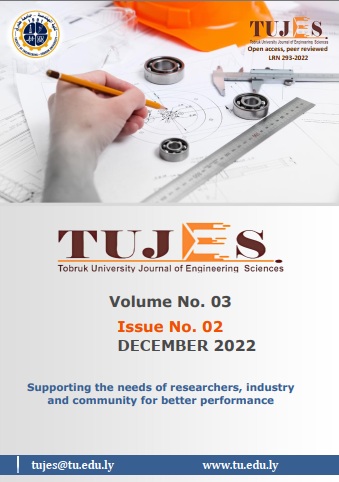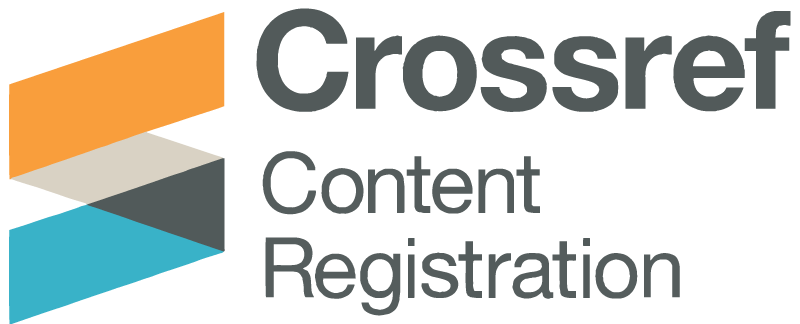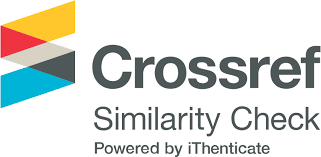Performance Investigation of 5 GHz Fixed Wireless Access Network
DOI:
https://doi.org/10.64516/16h9ss85Keywords:
FWA, 5 GHz, WISP, LibyaAbstract
Fixed Wireless Access (FWA) networks made substantial progress in providing reliable wireless services for users everywhere. To the best of our knowledge, this is the first attempt in Libya to study and assess the performance of a realistic local FWA network operating on an unlicensed 5 GHz band despite the widespread networks of this type throughout the country. This paper provides a detailed analysis of several factors and measurements that affect network performance. The study depends on measurements extracted from a real dataset of an active FWA network. The central performance metric we consider is the capacity offered by the network to the subscribers. Using modern and powerful Python libraries, we present statistical summaries for those factors to estimate the impact of each one individually on the performance. Finally, we utilized the well-known free space Path Loss (PL) model behavior to demonstrate and validate the accuracy of our measurements.
References
1. I. A. Alimi, R. K. Patel, N. J. Muga, and P. P. Monteiro, "Performance Analysis of 5G Fixed Wireless Access Networks with Antenna Diversity Techniques," Wireless Personal Communications, pp. 1-25, 2020.
2. P. Grønsund, P. E. Engelstad, T. Johnsen, and T. Skeie, "The physical performance and path loss in a fixed WiMAX deployment," in IWCMC, 2007.
3. Z. El Khaled, W. Ajib, and H. Mcheick, "An accurate empirical path loss model for heterogeneous fixed wireless networks below 5.8 GHz frequencies," IEEE Access, vol. 8, pp. 182755-182775, 2020.
4. V. Kiran, P. S. Telkar, D. Nayak, and D. Raj, "Wi-Fi and LTE Coexistence in Unlicensed Spectrum," in IoT with Smart Systems: Springer, 2022, pp. 773 783.
5. "Ubiquiti Inc." www.ui.com.
6. F. Idachaba, "Review of Selected Wireless System Path loss Prediction Models and its Adaptation to Indoor Propagation Environments," Lecture Notes in Engineering and Computer Science, vol. 2228, 03/15 2017.
7. A. El-Keyi, H. U. Sokun, T. N. Nguyen, Q. Ye, H. J. Zhu, and H. Yanikomeroglu, "A novel probabilistic path loss model for simulating coexistence between 802.11 and 802.15.4 networks in smart home environments," in 2017 IEEE 28th Annual International Symposium on Personal, Indoor, and Mobile Radio Communications (PIMRC), 8-13 Oct. 2017 2017, pp. 1-5, doi: 10.1109/PIMRC.2017.8292343.
8. M. Rademacher, M. Kessel, and K. Jonas, "Experimental Results For the Propagation of Outdoor IEEE802.11 Links," 2016.
9. L. Hong and Y.-W. Wu, "Path loss measurement of 2.4G band radio signal communication in disaster ruins," 2016 16th International Symposium on Communications and Information Technologies (ISCIT), pp. 439-444, 2016.
10. N. Rakesh and D. Nalineswari, "Comprehensive performance analysis of path loss models on GSM 940 MHz and IEEE 802.16 WIMAX frequency 3.5 GHz on different terrains," 2015 International Conference on Computer
Communication and Informatics (ICCCI), pp. 1-7, 2015.
11. R. El Chall, S. Lahoud, and M. El Helou, "LoRaWAN Network: Radio Propagation Models and Performance Evaluation in Various Environments in Lebanon," IEEE Internet of Things Journal, vol. 6, pp. 2366-2378, 2019.
12. G. R. MacCartney and T. T. S. Rappaport, "Rural Macrocell Path Loss Models for Millimeter Wave Wireless Communications," IEEE Journal on Selected Areas in Communications, vol. 35, pp. 1663-1677, 2017.
13. G. Maurya, P. A. Kokate, S. K. Lokhande, and J. A. Shrawankar, "A Review on Investigation and Assessment of Path Loss Models in Urban and Rural Environment," IOP Conference Series: Materials Science and Engineering,
vol. 225, 2017.
14. N. Moraitis, D. Vouyioukas, A. Gkioni, and S. Louvros, "Measurements and path loss models for a TD-LTE network at 3.7 GHz in rural areas," Wireless Networks, vol. 26, pp. 2891-2904, 2020.
15. K. L. Chee, A. Anggraini, and T. Kurner, "Effects of Carrier Frequency, Antenna Height and Season on Broadband Wireless Access in Rural Areas," IEEE Transactions on Antennas and Propagation, vol. 60, pp. 3432-
3443, 2012.
16. M. F. D. Guzman, C. A. G. Hilario, R. V. Vistal, I. C. Mosquera, J. M. Judan, and J. J. S. Marciano, "Alternative Backhaul link for Community Cellular Network in Rural Coastal Areas," 2019 IEEE Global Humanitarian Technology Conference (GHTC), pp. 1-6, 2019.
17. S. M. Hassan et al., "Bridging the Digital Divide in Malaysia using Fixed Wireless Access," in 2021 26th IEEE Asia-Pacific Conference on Communications (APCC), 2021: IEEE, pp. 74-78.
18. N. Z. A. Rahman, K. G. Tan, T. A. Rahman, I. F. M. Idris, and N. A. A. Hamzah, "Modeling of Dynamic Effect of Vegetation for Fixed Wireless Access System," Wireless Personal Communications, vol. 96, pp. 1329-1354,
2017.
19. M. K. Adityo, M. I. Nashiruddin, and M. A. Nugraha, "5g fixed wireless access network for urban residential market: A case of indonesia," in 2021 IEEE International Conference on Internet of Things and Intelligence Systems (IoTaIS), 2021: IEEE, pp. 123-128.
20. A. Colpaert, E. Vinogradov, and S. Pollin, "Fixed mmWave Multi-User MIMO: Performance Analysis and Proof- of-Concept Architecture," 2020 IEEE 91st Vehicular Technology Conference (VTC2020-Spring), pp. 1-5, 2020.
21. D. D. Dajab, S. E. Ogundapo, and J. Y. Oricha, "comparison of empirical and semi-empirical propagation loss models for gsm in an urban environment," 2015.
22. M. Hata, "Empirical formula for propagation loss in land mobile radio services," IEEE Transactions on Vehicular Technology, vol. 29, pp. 317-325, 1980.
23. H. Oudira, L. Diouane, and M. Garah, "Empirical Path Loss Models Optimization for Mobile Communication," in 2018 IEEE 5th International Congress on Information Science and Technology (CiSt), 2018: IEEE, pp. 443-
448.
24. M. S. Mollel and M. Kisangiri, "Comparison of Empirical Propagation Path Loss Models for Mobile Communication," Computer Engineering and Intelligent Systems, vol. 5, pp. 1-10, 2014.
25. G. S. Bola and G. S. Saini, "Path Loss Measurement and Estimation Using Different Empirical Models For WiMax In Urban Area," 2013.
26. Z. Nadir and H. Al Lawati, "LTE path-loss prediction models' comparative study for outdoor wireless communications," 2018.
27. N. Moraitis, L. Tsipis, and D. Vouyioukas, Machine Learning-Based Methods for Path Loss Prediction in Urban Environment for LTE Networks. 2020, pp. 1-6.
28. Z. El Khaled, W. Ajib, and H. Mcheick, "Log Distance Path Loss Model: Application and Improvement for Sub 5 GHz Rural Fixed Wireless Networks," IEEE Access, vol. 10, pp. 52020-52029, 2022.
29. N. Z. A. Rahman, K. G. Tan, A. Omer, T. A. Rahman, and A. W. Reza, "Radio Propagation Studies at 5.8 GHz for Point-to-Multipoint Applications Incorporating Vegetation Effect," Wireless Personal Communications, vol.
72, pp. 709-728, 2013.
30. T. Schwengler and M. Glbert, "Propagation models at 5.8 GHz-path loss and building penetration," in RAWCON 2000. 2000 IEEE Radio and Wireless Conference (Cat. No.00EX404), 13-13 Sept. 2000 2000, pp. 119-124.
31. A. L. Imoize, A. E. Ibhazeb, P. O. Nwosuc, and S. O. Ajosed, "Determination of Best-fit Propagation Models for Pathloss Prediction of a 4G LTE Network in Suburban and Urban Areas of Lagos, Nigeria," 2019.
32. S. M. Aldossari and K.-C. Chen, "Predicting the Path Loss of Wireless Channel Models Using Machine Learning Techniques in MmWave Urban Communications," 2019 22nd International Symposium on Wireless Personal Multimedia Communications (WPMC), pp. 1-6, 2019.
33. S. Worgu, S. G. Ajumo, and N. N. Odu, "Comparative evaluation of the path loss prediction performance Hata- Okumura path loss model for urban, suburban and rural areas," International Journal of Systems Science and Applied Mathematics, vol. 2, no. 1, pp. 42-50, 2017.
34. G. A. o. C. a. Informatics. " Authorized Private ISP List." General Authority of Communications and Informatics. https://www.cim.gov.ly/en/# (accessed 10/11/2022, 2022).
35. M. Merriman, A Text-book on the Method of Least Squares. J. Wiley & Sons, 1884.
Downloads
Published
Issue
Section
License
Copyright (c) 2022 Ali O. Gliwan, Wisam M. Eltarjaman, Hisham B. Almelah (Author)

This work is licensed under a Creative Commons Attribution 4.0 International License.













